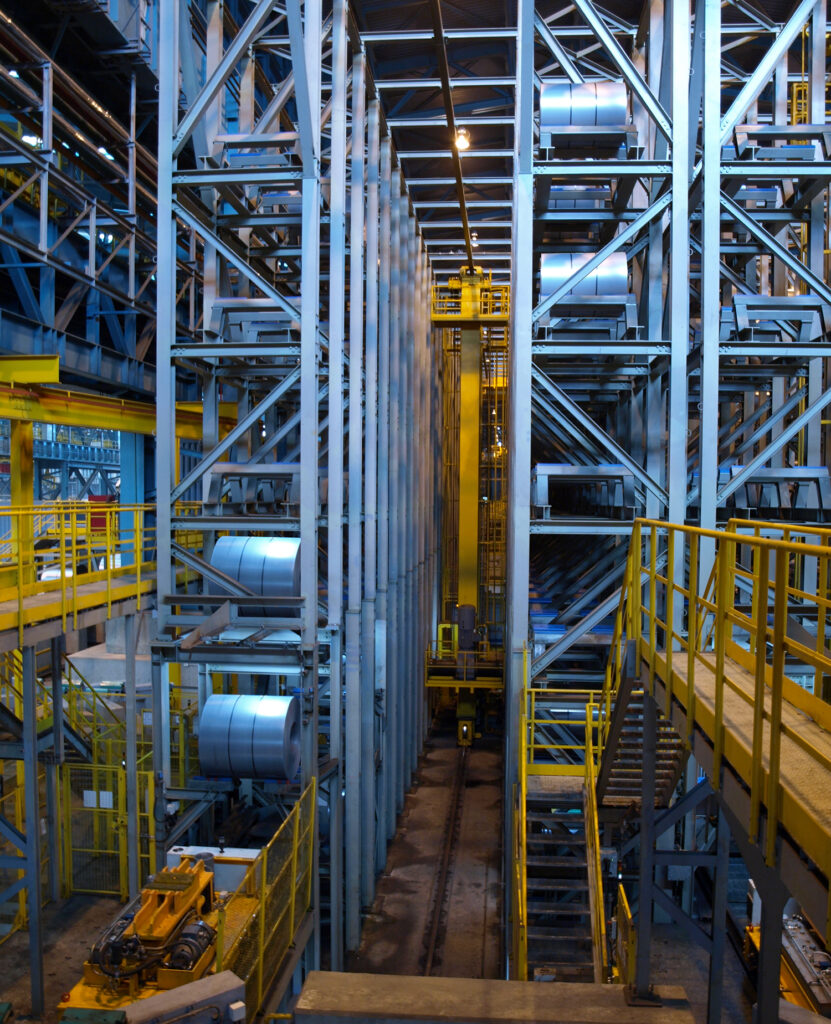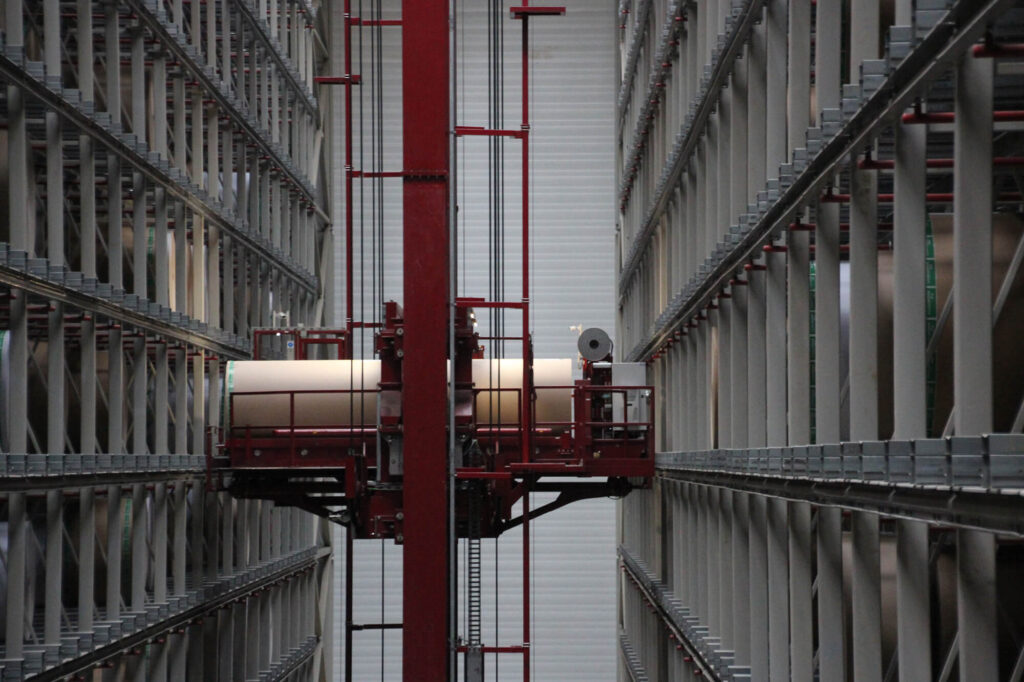Pesmel’s services and solutions do not exist in a vacuum but as one part of a complex supply chain leading from manufacturer to end consumer. Making sure that these solutions can integrate efficiently and easily into that chain helps everyone run their businesses smoothly.
Pesmel is well-known for cutting-edge material flow solutions. The warehouse management system (WMS), digital twin offering, and high-bay storage solutions are designed to make the production and transportation of material goods inside and from mills and other factories simple and effective.
Flexible and agile supply chain management
Depending on the business and its requirements, mill operators and their end customers may employ various kinds of supply chain models, such as on-demand, agile, made-to-stock, and so on. These models are potentially made up of dozens of steps, from sourcing raw material to delivery of the final product to the end customer. With years of experience, Pesmel understands how material flow solutions affect the supply chain. Often, they are the key elements in ensuring efficient business operations and satisfied end customers.
Achieving customer satisfaction is therefore complex. When talking about the supply chain, there may be several parts to it that combine to provide all the goods and products required for a successful business. Understanding how to manage all of them and accommodating different supply chain models requires
flexible and agile technologies. That’s why, for example, Pesmel’s high-bay warehousing solution is so advantageous, delivering high performance in any-sized facility.
Think of a logistics ecosystem with connected elements that influence efficiency and overall competitiveness.
When systems like flow control solutions are implemented, they need to be connected to production systems, end-user systems, and everything in between. A solution that is built to properly serve logistics increases overall supply chain effectiveness, saving turnaround times, improving transportation, and adapting to different production demands. And that same solution can be used to implement different supply chain models.


End customers frequently rely on suppliers who can rapidly adjust to changing demands, which may alter on a daily basis. It is useful to think of a logistics ecosystem with connected elements that influence efficiency and thereby overall competitiveness. In fact, we see this in everyday life with the explosion of e-commerce. In common with internet retailers, mill owners also need to ensure purchases are delivered promptly and in good condition. Delayed deliveries or inefficient handling reduce customer satisfaction and make it less likely that they will give more business to the vendor.
Digital connectivity and information sharing
The connectivity of Pesmel supply chain solutions is enabled through information sharing. While the physical technology of high-bay warehousing moves products quickly, the material flow WMS is connected to all the supply chain phases, including the end customer. The overall awareness that this connectivity offers brings obvious advantages to information sharing and production and supply modelling.

All of this means that the benefits of Pesmel’s offering are not limited to the production phase. Even when trucks are loaded and dispatched from a mill, shipping and delivery information is immediately shared with other, open-interfaced systems. In this sense, the material flow concept helps customers differentiate themselves from their competitors. By managing the information flow throughout the supply chain, and adapting to constantly changing demands, the WMS makes monitoring and running several complex systems at the same time possible. Implementing automated warehousing solutions improves any supply chain, allowing producers to better serve their customers.
Embracing digitalization and new technologies in the supply chain ecosystem opens the way to better customer service and improved market share.
It is well known that technology allows responsiveness. Embracing new technologies can solve problems before they even exist through the power of simulation. Pesmel’s digital twin service is an example of how digitalization makes the planning, commissioning, and running of modern mills faster, easier, and more efficient. The digital twin is built-in to the WMS environment, constantly collecting information from the supply chain and production plans. Simulating the mill’s operation days or weeks in advance, the twin allows the mill to decide on the efficacy of current and projected production, storage, and shipments, and how to fine-tune them to help meet the demands of the agile supply chain model.
Integrating the digital twin into the WMS makes it easy to serve customers in the long-term. Embracing digitalization and new technologies in the supply chain ecosystem opens the way to better customer service and increased market share through improved access to information, better planning possibilities, and overall enhanced logistics management. Pesmel, the leading provider of automated material flow solutions, is constantly developing advanced solutions to ensure customers can look to the future of their business with confidence.